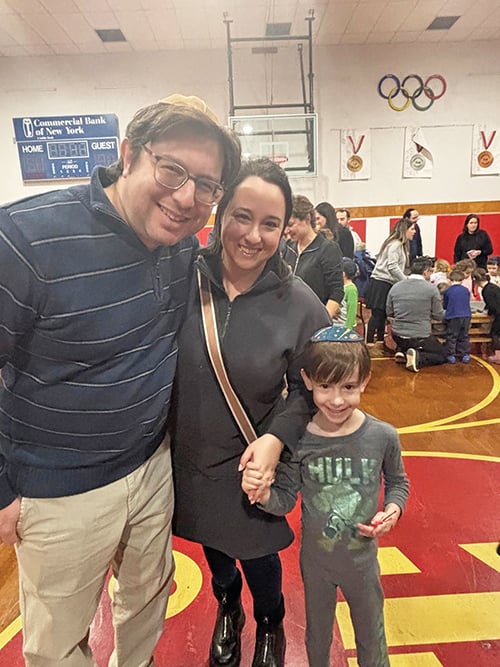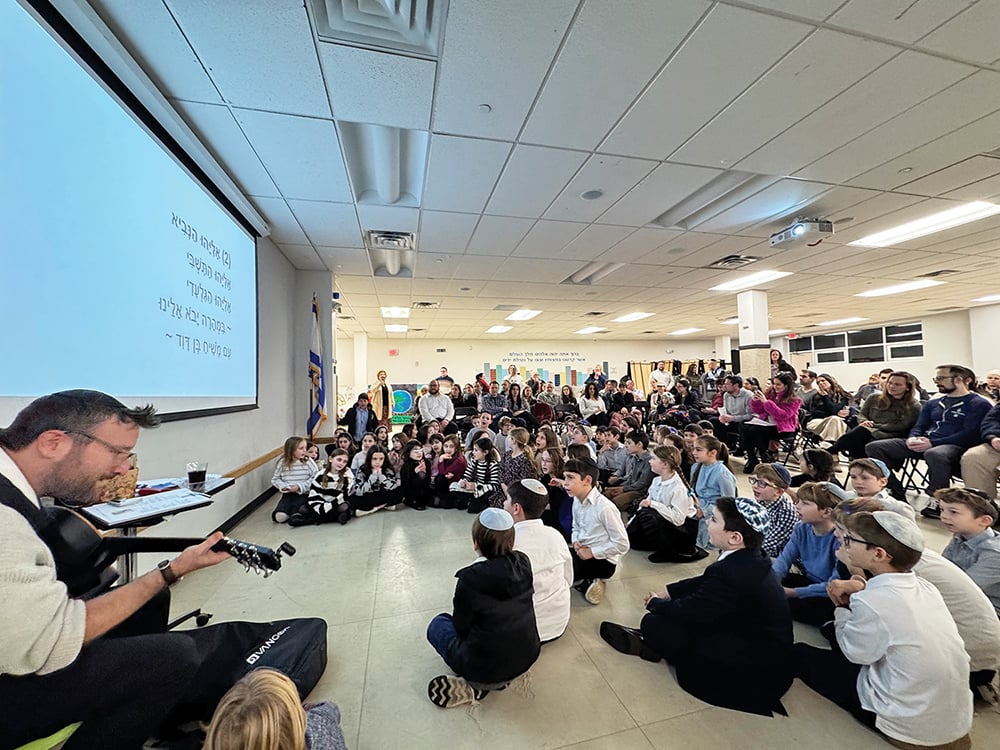We popularly refer to the eight-day period, from the 15th through the 22nd of Nisan, as the festival of Pesach. The Torah, however, calls this period Chag Hamatzot, during which time we eat matzot and abstain from eating chametz.
Pesach is an entirely different festival, celebrated on a different day. Pesach, according to the Torah, is celebrated on the 14th of Nisan, the day we call Erev Pesach, and lasts until midnight of that day. Pesach is the day when all of Israel were busy sacrificing the Paschal lamb. So crucial was the requirement to sacrifice the Paschal lamb on Pesach that the penalty for anyone failing to do so was premature death, at the hand of God—karet. The Paschal lamb was expensive to purchase and difficult to find. It had to be a male goat or sheep, not more than one year old. Several days before Pesach, the Jews formed themselves into groups. Each group purchased a Paschal lamb. The number of people constituting a group was the same number it would take to consume the lamb, with each person eating a portion no larger than the size of an olive. The group then appointed one of its members to walk the lamb, on the 14th of Nisan, to the Temple Courtyard, in Jerusalem. On the way, the member would meet up with a multitude of other group members, all walking their lambs to Jerusalem. According to one eyewitness, the hills of Jerusalem were covered that day with a white, moving, woolen blanket. Because the Temple Courtyard was too small to accommodate all the group members and their Paschal lambs at the same time, the sacrificial service was conducted in three shifts.
The Paschal lamb could not be slaughtered until after midday and not before all chametz was cleared away. All Paschal lambs had to be sacrificed before nightfall. The slaughtering of the lambs, but not the rest of the sacrificial service, could be performed by the group members themselves, even if not kohanim, priests. The kohanim, holding silver and golden vessels, stood in neat rows, stretching all the way from the animals to the Altar. These vessels, which were used to capture the animals’ blood, were handed from kohen to kohen, conveyor belt style, until they reached the Altar, on which they were then poured. The sacrificial parts of the animal were then burnt on the Altar. During the entire sacrificial service, trumpets were sounded and Hallel was recited. Those parts of the animal that were not burnt on the Altar—that is, the vast majority of the animal—were then carried back home to the group, now seated around the Seder table. The Torah sets forth explicit instructions as to when and how the Paschal lamb must be eaten. “Eat the [sacrificial] meat during the [Seder] night, roasted over fire. Eat it with matzah and bitter herbs… Do not leave any of it over until morning.” In addition, the Paschal lamb could only be eaten after the group members had first satisfied their hunger with the meat of the regular festival offering, the korban chagigah. The Paschal lamb could not, according to most opinions, be eaten after midnight.
According to the Ramban, sacrificing the Paschal lamb was an act of defiance against the Egyptians, who deified sheep. Rabbi Samson Raphael Hirsch views the Paschal lamb sacrifice as an antidote to the scene of the Brit Bein Habetarim. In that scene, the bull, the goat and the ram, symbolizing Jewish sovereignty, wealth and resistance respectively, were torn asunder, presaging three generations of slavery in Egypt. After the liberation, human dignity, family and social life were restored to the liberated slaves through the Paschal lamb. The Paschal lamb of each Jew, as an individual in his own right, was accepted by God and was enjoyed in the setting of family and friends.
According to my teacher, Harav Haga’on Dovid Feinstein, zt”l, the lamb symbolized wealth. It is referred to in the Torah as ashterot tzon, from the word “osher, wealth,” because as Rashi explains, the more numerous the flock, the wealthier the person. The Egyptians deified wealth, and the slaughtering of the lamb was to demonstrate the Jews’ departure from this culture as they began their journey toward Revelation.
Since the destruction of the Temple, korbanot exist only in the prayer book. This does not apply to the korban Pesach. It provides the structure for and is the centerpiece of the Seder night. Chametz must be cleared out by midday, the time the korban Pesach would have been brought. We are required to place a bone on the Seder plate and to eat the afikoman in lieu of the korban Pesach. Like the korban Pesach, the afikoman has to be eaten after the meal, before midnight. Finally, the maror sandwich, eaten between two matzot, replaces the korban Pesach that was eaten with matzah and maror. Seder night, then, is the meeting point of Chag HaPesach and Chag Hamatzot.
Raphael Grunfeld, a partner at the Wall Street law firm of Carter Ledyard & Milburn LLP, received semicha in Yoreh Yoreh from Mesivtha Tifereth Jerusalem of America and in Yadin Yadin from Rav Dovid Feinstein, zt’’l. This article is an extract from Raphael’s book “Ner Eyal: A Guide to Seder Nashim, Nezikin, Kodashim, Taharot and Zerayim,” available for purchase at www.amazon.com/dp/057816731X and “Ner Eyal: A Guide to the Laws of Shabbat and Festivals in Seder Moed” available for purchase at https://www.amazon.com/Eyal-Guide-Shabbat-Festivals-Seder/dp/0615118992. Questions for the author can be sent to [email protected].













